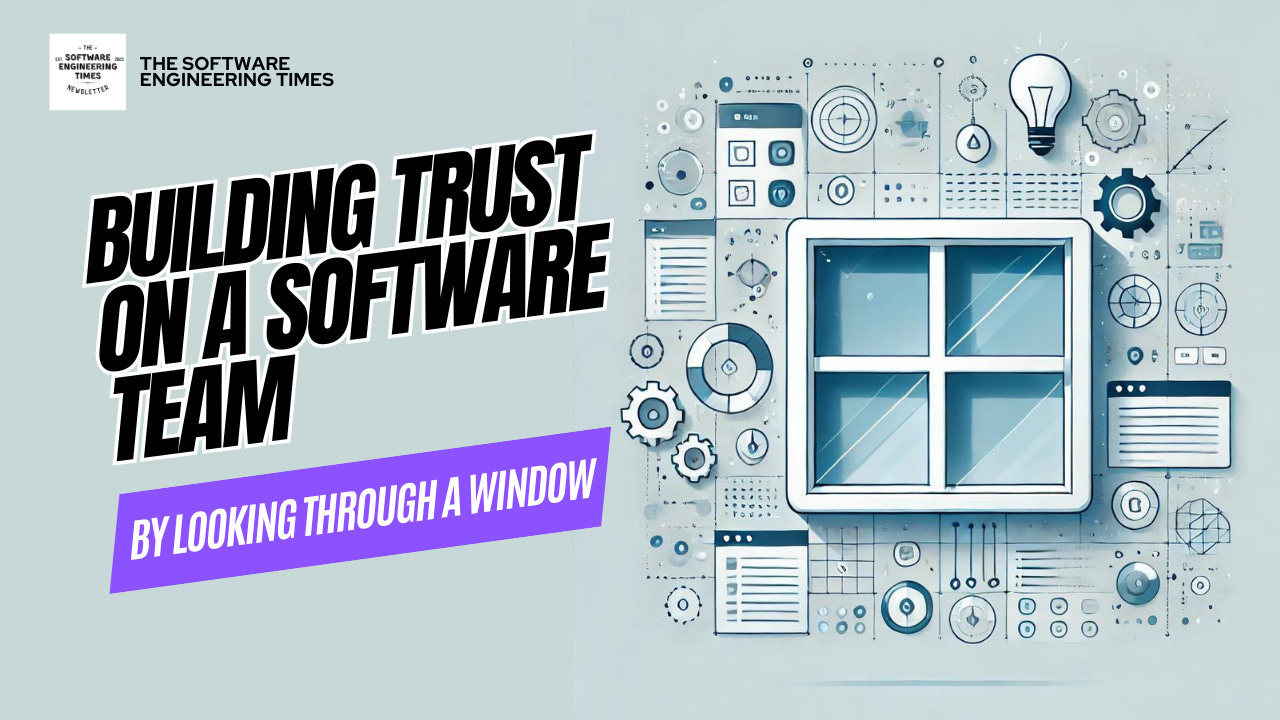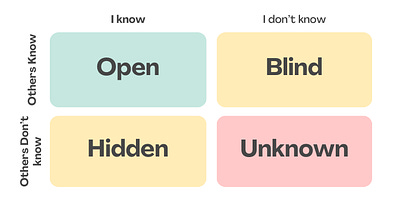How to Use a Window to Build Trust on a TeamExplore how a simple framework can unlock your team's full potential.Hey folks, this is Ryan with another edition of The Software Engineering Times. I look to enable current technology leadership and help build you into the next generation of software leadership. You can subscribe for free and get weekly issues straight to your inbox. Paid subscribers get the full archive of issues, access to free resources, templates, special offers, 10% off mentoring, and access to a private community. Imagine a team where miscommunication, a lack of trust, and low transparency consistently derail projects, lead to high turnover and make people feel isolated. The problem isn’t the code. Most problems in Software Engineering teams are people problems. They are rarely technical. A significant portion of those issues can be resolved if there is trust, transparency, collaboration, and safety. Trust is the nervous system of a high-performing team. You cannot have a high-performing team without having trust as a default. It's often the case where this isn’t true; people are siloed, individuals hog credit and only the highest-paid person’s opinion matters. Low levels of trust in a team can highlight challenges such as misunderstandings which result in constant conflict and miscommunication masking themselves as external pressures. I’m not completely jaded, I understand that technical skills and at times processes are critical to performance. It’s the human elements which act as an excelling force in unlocking potential. Apart from winging it, and learning from just time gone by, how can we apply existing frameworks to build trust in our teams and unlock high performance? The WindowA window is a fantastic metaphor for visualising trust and openness. Imagine if you and your team could look through a clear, transparent window into each other’s styles, strengths and blind spots. Knowing that information about each other would unlock approaches in working and practice. The window is a tool that allows us to see more clearly each other’s interactions, perceptions and behaviours. There is a well-established framework called the Johari Window method that helps teams guide themselves towards self-understanding and more open, transparent communication. The Johari WindowThe Johari Window provides a framework for building transparency and trust by guiding teams through a process of discovery and revealing different aspects of both individual and collective behaviours. The Johari Window is a 4 quadrant zone, hence the window analogy: open area, blind spot, hidden area, unknown area.
The goal is to increase the size of the open area. Different teams and people will have grids that don’t match up. How Do We Put This Into Practice?To put this into practice you need to dive into each quadrant and analyse potential wins and put practices into place which help build transparency and trust. Expanding the Open Area
Reducing the Blind Spot
Decreasing the Hidden Area
Exploring the Unknown
Closing ThoughtsYou cannot have a high-performing team with trust. You cannot have trust without openness and transparency. That is the foundation of a high-performing software engineering team. The goal is to use the metaphor of looking through a 4-pane glass window and strive to make it a 1-pane window where the open area takes up the whole piece of glass. Build your open areas, and decrease your unknowns. Share your insights with your teams and watch as they become more connected. This newsletter recently hit 4,500 subscribers, that’s so wild. Please like this (click the heart button at the bottom) and subscribe. It keeps me motivated and gives me heaps of help. Just quickly whilst I have you:
You're currently a free subscriber to The Software Engineering Times. For the full experience, upgrade your subscription. |


